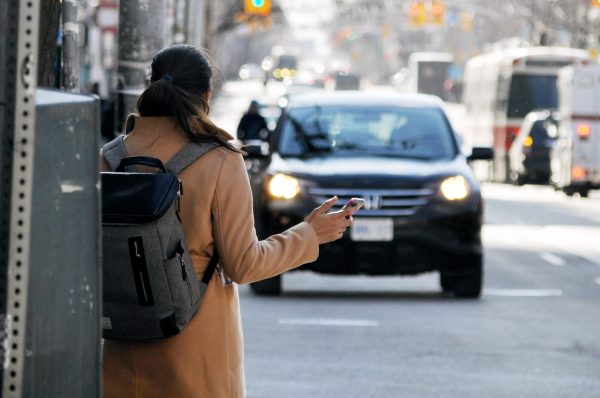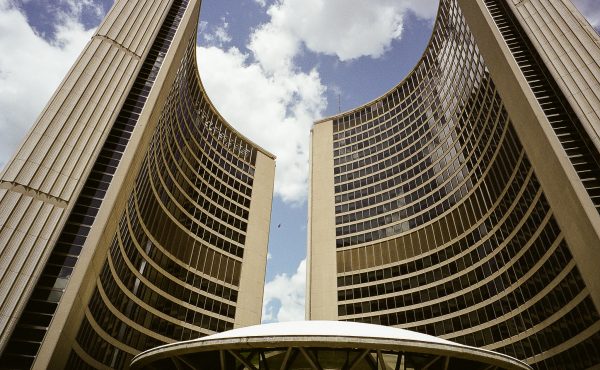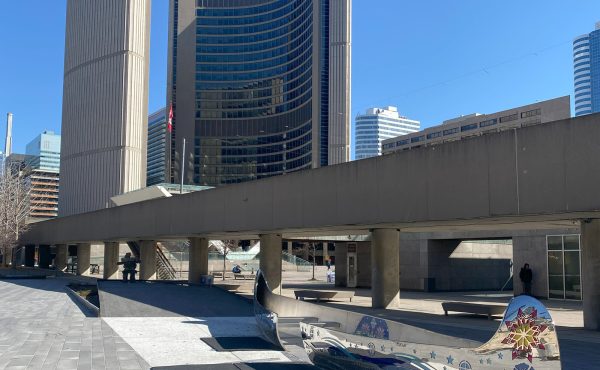In October, City Council temporarily paused issuing ride-hailing licenses for Lyft and Uber at 52,000, or ten times the pre-Uber average of taxi licenses. This pause has been supported by existing drivers but opposed by Uber and Lyft. In the days following this decision, we witnessed a resurfacing of Uber’s founding narrative, and while this narrative held sway ten years ago, it no longer does — and here is why.
When Uber entered Toronto in 2014, it did so on a wave of untested promises. It pledged to harness technology to address pressing urban problems, lowering congestion and emissions, reducing car ownership, and giving residents a way to supplement their incomes. What was not to like about it? The founding narrative was equally compelling to governments, promising new, app-enabled ways to address complex, messy regulatory issues, seemingly at no extra cost to taxpayers.
Then-Mayor Tory and his administration joined governments worldwide in de-regulating the vehicle-for-hire industry and transferring regulatory responsibilities to tech platforms. This included removing emission controls, longstanding training requirements, and city-run inspections, and granting platforms more power to determine fares (hello surge pricing) and complete control over the number of ride-hailing vehicles operating.
Fast-forward to 2023.
Almost ten years after Uber began operating in Toronto, it’s become clear that this experiment in allowing a vendor to (de)-regulate an industry has resulted in an industry optimized to meet that vendor’s corporate goals — in this case, Uber’s network growth and market dominance.
For the rest of us, this regulatory power transfer has accomplished the opposite of Uber’s promises. The company’s meteoric growth has, at worst, stimulated car ownership and, at best, failed to reduce it. Far from combatting congestion, it has exacerbated it and, along with it, emissions. In transit-rich cities, Uber trips have replaced public transportation, not private auto trips, eating into transit ridership and thereby deepening our reliance on private automobiles.
For cities to shift towards more sustainable transportation, it’s critical to move beyond Uber’s talking points and understand the dynamics producing these externalities.
Uber’s well-reported de-regulation of Toronto’s vehicle-for-hire industry in 2016 followed an established playbook fueled by an unprecedented PR/GR offensive. First, start operating illegally. Second, eliminate regulations preventing future drivers from signing up. Third, deeply subsidize rides — one author estimates that initially, Uber customers paid only 41% of the cost of their rides. Fourth, remove all limits to the number of licensed drivers and permit free entry and exit.
This last feature is the most critical and least understood aspect of the prevailing ride-hailing business model.
Allowing Uber to determine how many drivers can work on limited road space is a radical departure from past practice. Part of Uber’s PR work has been to make it feel like things always worked this way. But it has transformed mobility in our city: pre-Uber, Toronto had 5,000 cabs to supplement existing modes of transportation. By 2019, ride-hailing vehicles ballooned to over 90,000 — in addition to existing cabs. While a system that permits one ride-hailing car for about every 30 Toronto residents results in quicker pick-up times, it is terrible for our environment, traffic, road safety, public transit, and drivers’ incomes.
It’s clear that Uber and Lyft have added traffic to our roads that otherwise wouldn’t be there. Between 2016 and 2019, the number of daily ride-hailing trips in Toronto tripled. By 2021, ride-hail vehicles constituted as much as 14% of traffic in the busiest downtown Toronto neighbourhoods. Ride-hailing services have greater traffic impacts because drivers spend roughly half of their work time without passengers, either en-route or “deadheading” (waiting for a customer) — a proportion that increases with an oversupply of drivers. Across major cities, ride-hailing services doubled the total vehicle mileage travelled compared to the modes passengers would have otherwise taken. On already congested shared roads, an oversupply of drivers literally gets in the way of more sustainable forms of transportation, like surface transit, cycling, and walking.
Uber’s argument that people would drive themselves without ride-hailing is inaccurate and misleading. Pre-pandemic, only 5% of Uber rides in Toronto replaced trips in a private vehicle, but 49% replaced TTC trips. In 2019, City data suggests that the TTC lost as many as 31 million TTC trips to Uber and Lyft, siphoning off tens of millions in fare income, and most of these trips originated in the pedestrian-friendly, transit-rich downtown core. The Union of Concerned Scientists estimates that ride-hailing trips are currently 69% more polluting than the modes of transit they replace. Transit, not taxis, is the big prize for ride-hailing giants. Uber’s initial filings with the United States Securities and Exchange Commission identified public transportation as a market growth opportunity, stating its goal to replace “public transportation one use case at a time.”
No doubt rapid, convenient pick-ups also fueled the company’s growth and popularity. But this convenience is subsidized through drivers’ unpaid labour time. In Toronto, Uber estimates median driver revenues are $32 per hour of “engaged time.” But because drivers compete with tens of thousands of others to service ride requests, they spend only 48% of their working hours “engaged,” which translates to just over $16 per hour worked. Again, the proportion of unpaid labour time increases with an oversupply of drivers.
Drivers also subsidize rides by assuming the costs of acquiring and operating a vehicle. Study after study shows that ride-hailing drivers typically earn less than minimum wage; in Toronto, once you consider gas, insurance, and wear and tear, drivers take home about $7.90 per hour. Some may say that if it’s such a bad deal, why would anyone drive for Uber? This is a valid point. City data obtained through a Freedom of Information Request shows that in 2022, 36,000 drivers cancelled their licenses — about 2,700 drivers on average every month. In other words, drivers quit once they realize they can’t pay their bills working for Uber.
Countless attempts to address drivers’ precarity have missed the point that increasing minimum pay for engaged time means nothing if you don’t also increase the time drivers actually spend engaged (B.C. is being encouraged by Uber to repeat this mistake at the time of writing). As pay rates increase, more drivers enter the system to compete for the same business, decreasing the proportion of engaged time. This fundamentally differs from how cities regulate taxis: by calibrating the number of taxis, cities ensure drivers can expect decent and predictable earnings.
This is why many drivers welcomed Toronto’s pause. This decision forces the company to re-code its AI to deploy its workforce more efficiently. Once driver utilization increases, drivers will drive less empty, earn more money, and contribute less to congestion and emissions. This is not just wishful thinking: New York City capped ride-hail licenses, and the company’s utilization rate did, in fact, increase. (NYC’s fleet is only marginally larger than Toronto’s despite serving a population three times our size).
While there is undoubtedly a place for app-based ride-hailing services, we must ensure that companies are regulated in the public interest. Transferring regulatory powers to tech platforms has not delivered on their promises. Toronto’s temporary pause represents the first step towards regaining public control of a sector that has become Uber-inefficient. We don’t need to give up the convenience of app-based ride-hailing, but we need to make app companies work for all of us.
photo by BeyondDC





One comment
The TTC is at best a stressful and at worst a dangerous experience these days. Make public transit an attractive option instead of taking away alternatives that are actually convenient and safe.